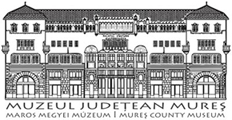Marisia - Maros Megyei Múzeum Évkönyve 32/2. (2012)
Articles
A Neolithic Feature Discovered at Alba Iulia-Lumea Nouä realistic human face, including the hairstyle. Idols discovered at Tártária and dated to the B1 phase of the Vinca culture show similarities in modelling and in the representation of the human traits (Lazarovici et al. 2011, 122, fig. VI/19a-c). The small spherical cup (PL 2/2) was 10 cm in height and 13 cm in diameter (bottom: 5 cm, rim: 10 cm); with a well polished outer and inner surface and thin walls it belongs to the fine category. The cup was not ornamented; the brownish and brown-greyish colour indicates a mixed firing. The cup was found broken in to equal vertical pieces, placed on the bottom of two diametrically opposed hollows from the pit house, at a distance of two metres. This deposition brings into discussion the intentional fragmentation of artefacts in the Vinca culture and the functionality of the feature where it was found. In the relatively poor inventory of the pit house a 7 cm long and 1.5 cm wide chipped flint blade was discovered, trapezoidal in section (Pi. 2/3). The good quality raw material originates from the Metalliferous Mountains in the Apuseni Mountains. Its colour is honey-yellow whit darker parts and white spots, chromatic specific to the so-called ‘Banat flint’. The generously executed utensil with remarkable functional qualities shows marks of intensive use. The relatively large-sized, fragmentary zoomorphic vessel (PI. 2/4) was found in eight pieces2 - presumably 75% of the original artefact is kept - in the central area of the pit house; it was 22 cm long, 12/15 cm wide and 18 cm high. The clay is of high quality; the surface is smoothened and well polished. The oxidizing firing resulted in a brownish-grey colour on the sides and brownish-red on the bottom. In order to emphasize the zoomorphic representation the vessel was ornamented with oblique incisions, which form an inverted V on the backside. Its base and the body were rectangular with rounded corners, while the horizontal section at the rim is oval. The fragmentary, cylindrical, massive ‘legs’ representing schematic anatomical elements, start obliquely from the corner of the base, while on the shortest side of the body - the two short sides were uneven, 12 and 15 cm - a protoma (handle or tail?) can be seen, which reminds of a turtle or other aquatic animal. The smaller side with the tail seems to be the backside, and the fragmentary, wider opposite side could be the front of the vessel, probably with further zoomorphic (or anthropomorphic?) representations. It is also possible - however hardly imaginable - that the human protoma presented earlier was the representation from the front side, which would point to a symbiosis, a syncretism of human and animal attributes, already mentioned for the Balkan area (Lazarovici 1970; Vlassa 1967; 1976; Gimbutas 1973; Lazarovici et al. 2001; Paul 1992). Analogies for the zoomorphic vessel are known from Turdas, kept in the Zsófia Torma collection (Roska 1941, Taf. XCVII/2-4, 7, 9, 13-14, 16-18, 20; XCVIII/1, 3, 12; CIV/5; CXLIII/14); one of the pieces presents similar incised ornamentation on the legs (Roska 1941, Taf. XCIX/11). Such a vessel is known also from the lower level in Valea Nandrului, Hunedoara County (Roska 1941, Taf. CXLVII/9). Considering the heterogeneous character of the mentioned collection it is probable that the anthropomorphic and zoomorphic vessels come from early Vinca sites from the Mures Valley - probably from the vicinity of Turdas and Orästie -, however one cannot exclude that this type of pottery persisted in the Turdas culture. Chronologically close anthropomorphic and zoomorphic representations are also known from Limba-Oarda de Jos (ClUTÄ 2000; 2004; 2005; 2009a; 2009b; 2010; Ciutä-Florescu 2010; Ciutä-Ciutä 2011). Considering the analogies from the Tisza Plain and Banat the ritual vessel brings into discussion new hypotheses regarding the cultural-historical synchronism. 2 The restoration represented the graduation work of C. Ignat in 1999 at the Lucian Blaga University in Sibiu. 9
